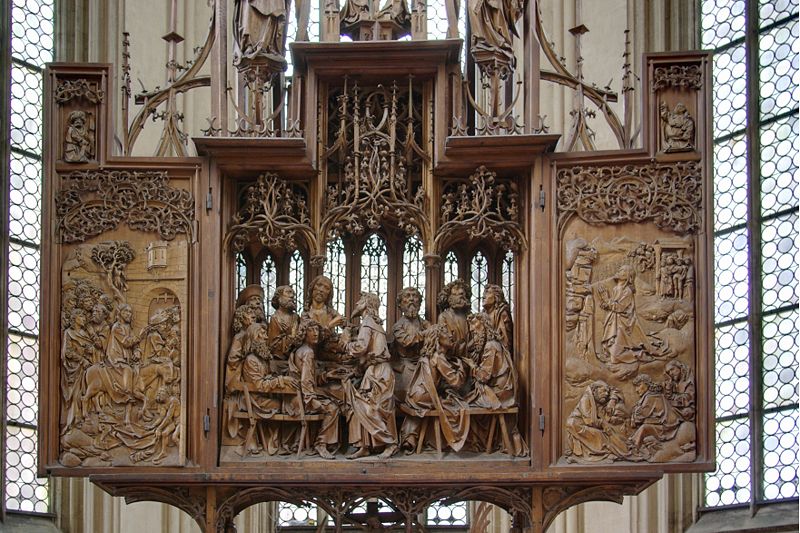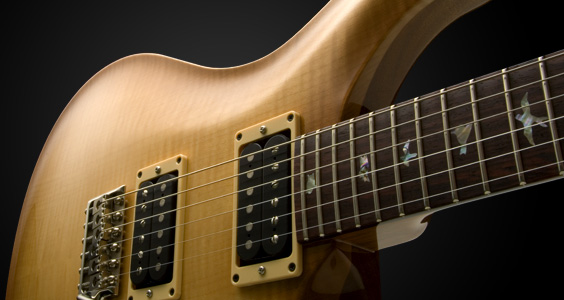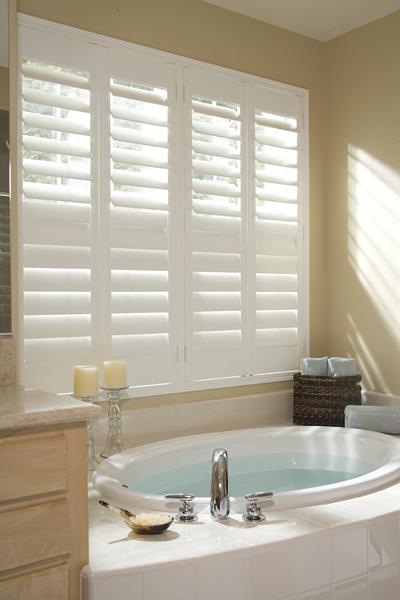What makes something strong? It’s character? It’s bulk? A certain Je ne sais quois?
In the case of basswood, its true strength can be found in its weakness.
“Basswood, also known as linden or lime wood, is some pretty plain looking stuff,” said Eric Poirier of Bell Forest Products. “No real showy grain or figure, a very light color and – well – it’s just beautiful in its simplicity.”
Now, how would such a plain looking board be considered beautiful? “If you are looking for an excellent wood to carve, there are few as good as this one.” For centuries, woodcarvers have been slicing into basswood, creating absolutely crisp detail with minimal tear out. How intricate? Well, this picture is from part of an altar carving made by German artist Tilman Reimenschneider back in the early 1500’s… Wow…
These and other artistic treasures can still be found all across Europe at cathedrals and palaces. The wood is highly stable, making it less prone to movement and cracking over time. “Along with its ease of carving, the neutral color of basswood doesn’t detract from what’s being carved into it. It becomes – in effect – a blank canvas for a woodcarver to work on.”
What else is basswood good for beyond carving? Plenty. Its light weight and tonal properties make it an excellent material for electric guitar bodies and wooden instruments such as recorders and is also used when creating drum shells.
Basswood’s light weight also makes it a natural for wooden blinds and shutters. “Imagine the weight that can be kept off a set of hinges using basswood over other common species. That means less stress on the hinges, significantly improving their lifespan. If you are looking to build a set of plantation shutters for your home, basswood is an excellent option.”
So, while its reputation is as a lightweight, give basswood a chance. You might be surprised just how strongly you will rely on it in your woodworking.
Woodworking Spotlight: Basswood
What makes something strong? It’s character? It’s bulk? A certain Je ne sais quois?
In the case of basswood, its true strength can be found in its weakness.
“Basswood, also known as linden or lime wood, is some pretty plain looking stuff,” said Eric Poirier of Bell Forest Products. “No real showy grain or figure, a very light color and – well – it’s just beautiful in its simplicity.”
Now, how would such a plain looking board be considered beautiful? “If you are looking for an excellent wood to carve, there are few as good as this one.” For centuries, woodcarvers have been slicing into basswood, creating absolutely crisp detail with minimal tear out. How intricate? Well, this picture is from part of an altar carving made by German artist Tilman Reimenschneider back in the early 1500’s… Wow…
These and other artistic treasures can still be found all across Europe at cathedrals and palaces. The wood is highly stable, making it less prone to movement and cracking over time. “Along with its ease of carving, the neutral color of basswood doesn’t detract from what’s being carved into it. It becomes – in effect – a blank canvas for a woodcarver to work on.”
What else is basswood good for beyond carving? Plenty. Its light weight and tonal properties make it an excellent material for electric guitar bodies and wooden instruments such as recorders and is sometimes used when creating drum shells.
Basswood’s light weight also makes it a natural for wooden blinds and shutters. “Imagine the weight that can be kept off a set of hinges using basswood over other common species. That means less stress on the hinges, significantly improving their lifespan. If you are looking to build a set of plantation shutters for your home, basswood is an excellent option.”
So, while its reputation is as a lightweight, give basswood a chance. You might be surprised just how strongly you will rely on it in your woodworking.




Basswood is also great for picture frames……..
How cool would it have been hanging around with old Tilman?
He was like the rain-man of carvers.
Thanks tom.
No phone… no internet… no TV… no radio… no problem for old Tilman!
My favourite stringer to shape on a surfboard blank. It cuts and shaves beautifully.
I have never heard of using Basswood for plantation shutters. I do like you thoughts on them though. They would put less pressure on the hinges.